
Kota Kinabalu, colloquially referred to as KK, is the state capital of Sabah, Malaysia. It is also the capital of the Kota Kinabalu District as well as the West Coast Division of Sabah. The city is located on the northwest coast of Borneo facing the South China Sea. The Tunku Abdul Rahman National Park lies to its west and Mount Kinabalu, which gave the city its name, is located to its east. Kota Kinabalu has a population of 452,058 according to the 2010 census; when the adjacent Penampang and Tuaran districts are included, the metro area has a combined population of 628,725. The 2020 Census revealed an increase in the municipal population to 500,421, while the wider area including the Penampang and Putatan districts had a population of 731,406.

Admiral of the Fleet The Honourable Sir Henry Keppel was a Royal Navy officer. His first command was largely spent off the coast of Spain, which was then in the midst of the First Carlist War. As commanding officer of the corvette HMS Dido on the East Indies and China Station he was deployed in operations during the First Opium War and in operations against Borneo pirates. He later served as commander of the naval brigade besieging Sebastopol during the Crimean War. After becoming second-in-command of the East Indies and China Station, he commanded the British squadron in the action with Chinese pirates at the Battle of Fatshan Creek when he sank around 100 enemy war-junks. He subsequently took part in the capture of Canton during the Second Opium War.
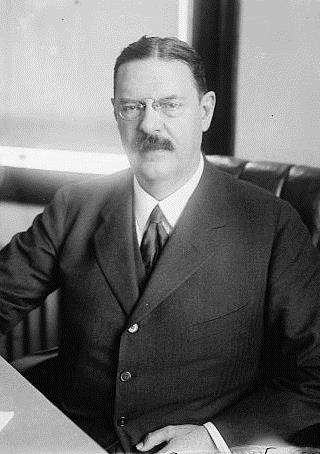
Lewis Nixon was a naval architect, shipbuilding executive, public servant, and political activist. He designed the United States' first modern battleships, and supervised the construction of its first modern submarines, all before his 40th birthday. He was briefly the leader of Tammany Hall. He started an ill-fated effort to run seven major American shipyards under common ownership as the United States Shipbuilding Company, and he was the chair of the New York City commission building the Williamsburg Bridge.
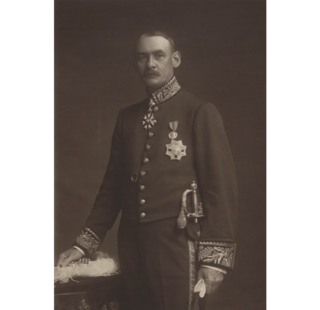
Sir Edward Lewis Brockman was a colonial administrator who served briefly as the Colonial Secretary to the Straits Settlements in 1911 and was the chief secretary to the Federated Malay States (FMS) from 1911 to 1920. He announced the establishment of the Town Planning Committee to oversee Kuala Lumpur town planning service. He was descendant of the English Brockman family. Brockman Road in Kuala Lumpur was named after him, where the former Prime Minister office was located.
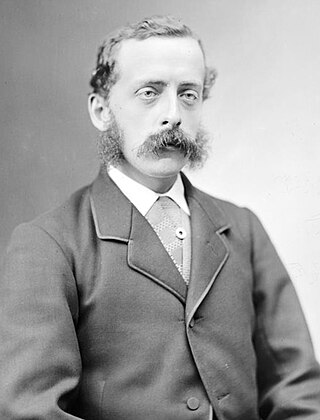
Nicholas Fish II was a United States diplomat who served as the ambassador to Switzerland from 1877 to 1881 and the ambassador to Belgium from 1882 to 1885. In a widely reported crime of the time known as the "sensation of the day," Fish was murdered while leaving a New York City bar.

Sir Hugh Charles Clifford, was a British colonial administrator.

Weston is a small town located on the west coast of the Malaysian state of Sabah, about 100 kilometers south of Kota Kinabalu, the state capital. Weston is part of the Beaufort District in the Interior Division and was named after Arthur J. West, a railway engineer for the North Borneo Chartered Company. Weston is one of the towns along the Pan Borneo Highway.
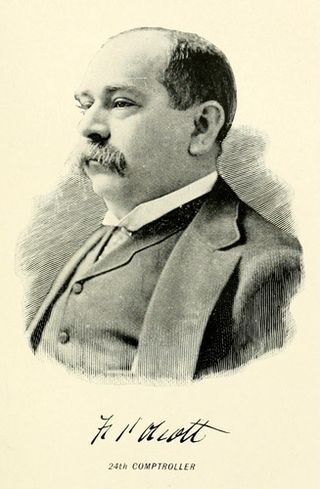
Frederic Pepoon Olcott was an American banker and politician.

John Maxwell Hall, known most commonly as Maxwell Hall, was a British colonial administrator, judge and author who lived in and wrote about North Borneo.

George Cathcart Woolley was a British colonial administrator in North Borneo in the early part on the twentieth century. Woolley was also an ethnographer and an ardent collector, and the Woolley Collections of photographs, diaries and other artefacts, bequeathed to the State Government of Sabah, formed the nucleus of Sabah Museum when it was founded in 1965.

George Macculloch Miller, was a prominent lawyer and secretary of Cathedral of St. John the Divine.
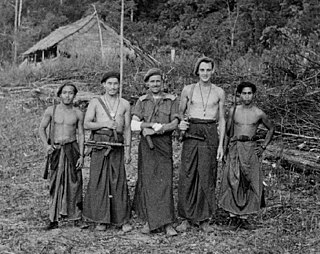
Lieutenant-Colonel Francis George Leach "Gort" Chester DSO, OBE was a British soldier who led several Z Special Unit operations in Borneo during World War II.

The Atkinson Clock Tower is the oldest standing structure in Kota Kinabalu. It was originally known as the Atkinson Memorial Clock Tower and sits in solitary on the bluff along Signal Hill Road overlooking this seaside city and capital of Sabah, Malaysia.

St Mary and All Saints’ Church, Kidderminster is a Grade I listed Major Parish Church in the Church of England in Kidderminster, Worcestershire, England.
Edwin Richard Hallifax was a senior official in Hong Kong in the early 20th century. There is a double "l" in the spelling of his surname. His official Chinese name is "夏理德". He was regarded as a very conservative officer. He died on 4 May 1950 in Tiverton, Devon.
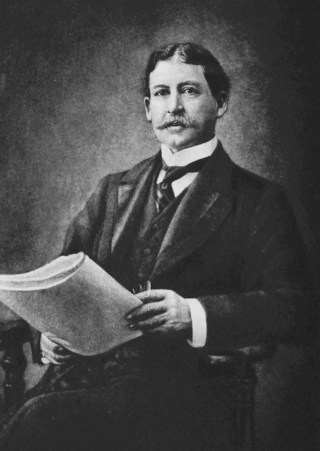
Heber Reginald Bishop was an American businessman and philanthropist of the late 19th and early 20th centuries. His collections of art, especially his noted collection of jade, were donated to museums. Bishop was a Trustee of the Metropolitan Museum in New York City during its early years.

William Clark Cowie was a Scottish engineer, mariner, and businessman who helped establish British North Borneo and was Chairman of the British North Borneo Company.

Jonathan Sturges was an American businessman, arts patron, and philanthropist.
Borneo Airways Limited also known as Borneo Airways, was the flag carrier and the principal domestic airline in British Borneo based in Labuan between 1957 until 1 April 1965 when it merged with Malaysian Airways.

The Hokitika Clock Tower, initially called the Westland War Memorial and then the Coronation and War Memorial, is a prominent landmark in Hokitika, New Zealand. The memorial was initiated, fundraised for, and carried out by a committee, to commemorate the region's contribution to the Second Boer War; not just the four local men who had died but all 130 who had gone to war in South Africa. An additional purpose was to provide Hokitika with a town clock.


















